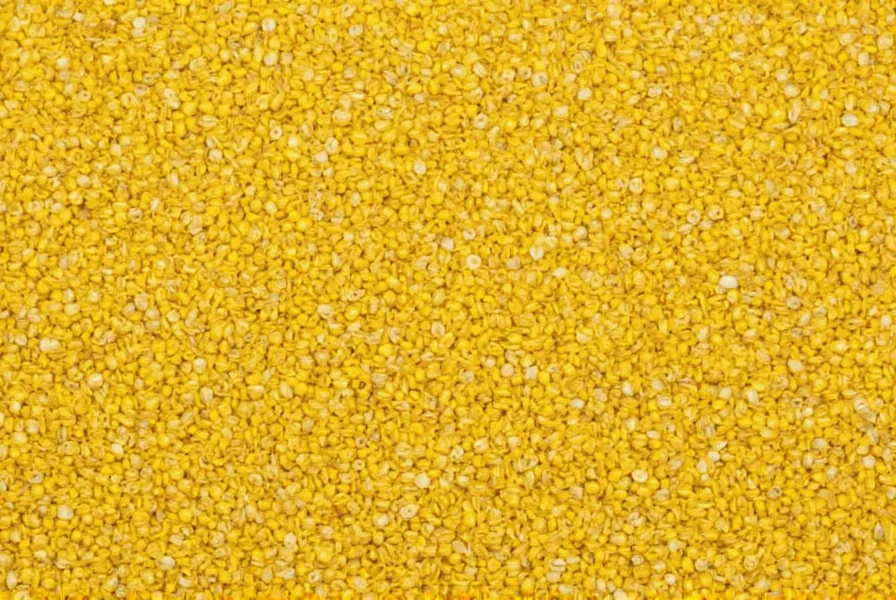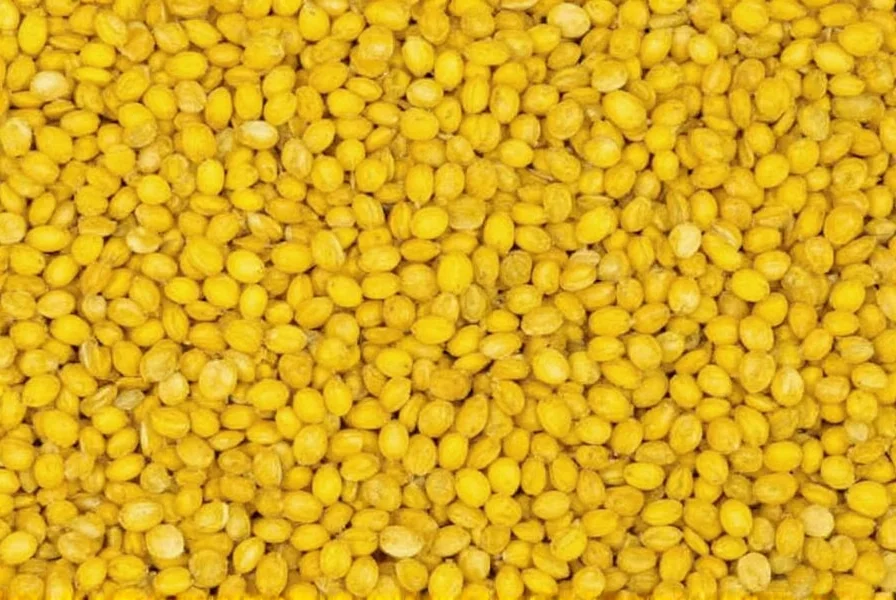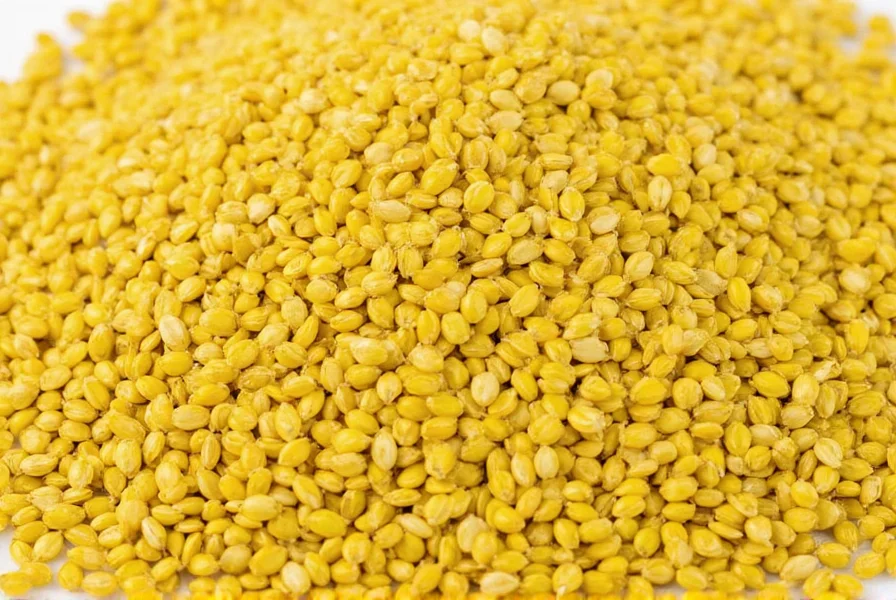Understanding the unique properties of yellow mustard seeds helps home cooks and health-conscious individuals make informed decisions about incorporating them into their diets. Unlike their spicier brown and black counterparts, yellow mustard seeds provide a gentler flavor profile that works well in various culinary applications without overwhelming other ingredients.
Botanical Characteristics and Identification
Yellow mustard seeds come from Brassica alba (formerly Sinapis alba), an annual plant in the Brassicaceae family. These seeds measure approximately 1-2 mm in diameter and have a smooth, round shape with a distinctive pale yellow to light tan color. When whole, they maintain their mild flavor, but crushing or grinding releases enzymes that create the characteristic pungency associated with mustard.
The plant grows to about 2-4 feet tall with yellow flowers that develop into seed pods containing the mature seeds. Harvesting typically occurs when the pods turn brown and dry on the plant. Proper identification is essential, as yellow mustard seeds are sometimes confused with other varieties that have significantly different flavor profiles and heat levels.
Nutritional Profile and Health Benefits of yellow mustard seeds
Yellow mustard seeds offer a concentrated source of essential nutrients despite their small size. A single tablespoon (9g) contains approximately:
| Nutrient | Amount per Tablespoon | Percentage of Daily Value |
|---|---|---|
| Calories | 59 | 3% |
| Protein | 3.1g | 6% |
| Fat | 3.6g | 5% |
| Carbohydrates | 3.7g | 1% |
| Fiber | 2.6g | 9% |
| Selenium | 3.5mcg | 6% |
| Magnesium | 25mg | 6% |
Research suggests several potential health benefits of consuming yellow mustard seeds regularly. The selenium content supports thyroid function and acts as an antioxidant, while the fiber promotes digestive health. Compounds called glucosinolates, though present in lower concentrations than in darker mustard varieties, may offer anti-inflammatory effects. The magnesium in yellow mustard seeds contributes to bone health and muscle function.
Unlike brown mustard seeds which contain higher levels of allyl isothiocyanate (the compound responsible for heat), yellow mustard seeds have a milder chemical profile, making them suitable for those sensitive to spicy foods while still providing nutritional advantages.

Culinary Applications and Preparation Methods
Yellow mustard seeds versatility in the kitchen makes them valuable for various cooking techniques. When using yellow mustard seeds in recipes, understanding how preparation affects flavor is crucial for optimal results. Whole seeds provide texture and a subtle nutty flavor when toasted, while ground seeds create the base for classic yellow mustard.
For traditional yellow mustard preparation, seeds are combined with vinegar, water, turmeric (which gives the characteristic yellow color), and other spices. The vinegar prevents the enzymatic reaction that creates heat, resulting in the mild flavor profile Americans associate with ballpark mustard. This differs significantly from Dijon or spicy brown mustards that use different seed varieties and preparation methods.
Chefs often use yellow mustard seeds in:
- Pickling solutions for vegetables
- Marinades for meats and tofu
- Spice rubs for grilled foods
- Salad dressings and vinaigrettes
- Indian cuisine (particularly in tempering oils)
When toasting yellow mustard seeds, watch carefully as they can burn quickly. The optimal technique involves heating a dry skillet over medium heat, adding seeds, and shaking frequently until they become fragrant and begin to pop (about 2-3 minutes). This enhances their nutty flavor without creating excessive bitterness.
Yellow Mustard Seeds vs Other Varieties
Understanding the differences between yellow mustard seeds and other varieties helps in selecting the right type for specific culinary applications. The three primary mustard seed types include:
- Yellow mustard seeds (Sinapis alba): Mild flavor, pale color, slow to develop heat
- Brown mustard seeds (Brassica juncea): Medium heat level, used in Dijon and spicy brown mustards
- Black mustard seeds (Brassica nigra): Most pungent, used in traditional Indian and Ethiopian cooking
The heat differential stems from varying levels of myrosinase enzyme and sinigrin compound. Yellow mustard seeds contain less sinigrin than brown or black varieties, resulting in their characteristic mildness. This makes them ideal for applications where mustard flavor is desired without significant heat.
When substituting between varieties, consider that yellow mustard seeds won't provide the same level of pungency as brown or black seeds. For recipes specifically calling for yellow mustard seeds, substitution may alter the intended flavor profile significantly.
Proper Storage Techniques for Maximum Freshness
To maintain the quality and flavor of yellow mustard seeds, proper storage is essential. Whole seeds retain their quality longer than ground seeds due to reduced surface area exposed to oxygen. For optimal shelf life:
- Store in an airtight container away from light and heat
- Keep in a cool, dark pantry location (below 70°F/21°C)
- Consider refrigeration in humid climates to prevent moisture absorption
- Label containers with purchase date for freshness tracking
Properly stored whole yellow mustard seeds maintain peak quality for 3-4 years, while ground seeds lose potency within 6-12 months. Signs of deterioration include loss of aroma, rancid smell, or visible mold. Freezing is generally unnecessary for whole seeds but can extend the shelf life of ground mustard powder.

Safety Considerations and Potential Allergies
Yellow mustard seeds are generally recognized as safe for most people when consumed in typical culinary amounts. However, some individuals may experience adverse reactions. Mustard allergy, while less common than other food allergies, affects approximately 0.1-0.2% of the population, particularly in regions where mustard is frequently consumed.
Symptoms of mustard allergy can include:
- Hives or skin rash
- Swelling of lips, face, or throat
- Respiratory difficulties
- Gastrointestinal distress
People with known mustard allergies should avoid all forms of mustard seeds and products containing them. Those with thyroid conditions should consult with healthcare providers about consumption, as mustard seeds contain goitrogens that may affect thyroid function in sensitive individuals when consumed in excessive amounts.
Frequently Asked Questions
What's the difference between yellow mustard seeds and regular mustard seeds?
Yellow mustard seeds (Sinapis alba) are milder and have a paler color compared to brown or black mustard seeds. They contain less sinigrin, the compound that creates heat, resulting in a gentler flavor profile. This makes them ideal for American-style yellow mustard and applications where a subtle mustard flavor is desired without significant spiciness.
Can I substitute yellow mustard seeds for brown mustard seeds in recipes?
While substitution is possible, it will significantly alter the flavor profile. Yellow mustard seeds are much milder than brown seeds. If substituting yellow for brown, you'll need approximately twice the amount to achieve similar flavor intensity, but the heat profile will still differ. For recipes specifically requiring the pungency of brown mustard seeds (like Dijon mustard), substitution isn't recommended.
How do I activate the flavor of yellow mustard seeds?
To activate the flavor compounds in yellow mustard seeds, they need moisture and time. When making mustard, combine ground seeds with cold water or vinegar and let sit for 10-15 minutes before use. For cooking applications, toasting whole seeds in a dry pan until fragrant (about 2-3 minutes) enhances their nutty flavor. The enzymatic reaction that creates pungency is slower with yellow seeds compared to darker varieties.
Are yellow mustard seeds good for digestion?
Yes, yellow mustard seeds contain dietary fiber and compounds that may support digestive health. The fiber content (2.6g per tablespoon) promotes regular bowel movements, while certain compounds may stimulate digestive enzyme production. Traditional medicine systems have used mustard seeds to alleviate indigestion, though scientific evidence for specific digestive benefits is limited compared to other seed varieties.
Why does American yellow mustard have that distinctive color?
American yellow mustard gets its characteristic bright yellow color primarily from turmeric, not from the yellow mustard seeds themselves. While the seeds are pale yellow, they don't produce the vibrant color associated with ballpark mustard. Turmeric is added specifically for color, while the vinegar in the preparation prevents the enzymatic reaction that would create heat, resulting in the mild flavor profile.











 浙公网安备
33010002000092号
浙公网安备
33010002000092号 浙B2-20120091-4
浙B2-20120091-4